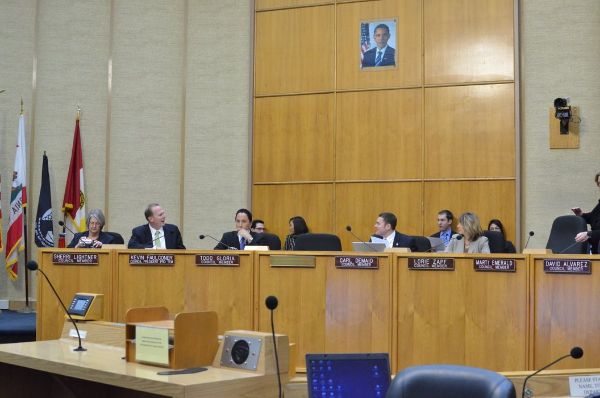San Diego City Council Addresses Financial Issues


On Monday, November 26, San Diego City Council met (after having been adjourned Thanksgiving week) to discuss, among other items of business, key financial issues to the city.
Council's first item of business was the presentation of outgoing Mayor Sanders' five-year budget outlook report, which had been prepared by the city's Independent Budget Analyst (IBA), Andrea Tevlin. Council voted unanimously to accept the IBA report at Monday's meeting.
On October 24, Mayor Sanders released his five-year financial outlook for the city. This outlook covered FY2014 to FY2018, and contrasted heavily with past outlooks - projecting surpluses in each of the five years - beginning with a $4.9 million surplus in FY 2014, and increasing to a $94.2 million surplus projected for FY 2018.
The Office of the IBA continued in the release about their efforts within the past seven years to reduce costs and increase efficiencies of city operations. Through "business process reengineering, IT outsourcing, managed competitions, retiree healthcare and other benefit reforms, pension restructuring, and salary reductions and freezes," the city has worked to achieve a "structurally balanced budget," says the IBA.
Council member Carl Demaio expressed that council needed to "stay the course" at the Monday meeting.
"Progress has been made, and reform has worked," said DeMaio. "I'm watching how this has played out in the media, and some consider it a best case/worst case scenario - which highly differs from my opinion. One thing we are not talking about is restoring services to the communities they were left out of six or seven years ago."
Over the past few years, the unexpected revenue growth provided the city with the opportunity to restore the elimination of fire engine "brown outs," as well as cuts seen for public libraries and recreational facilities hours of operation.
Included are the impacts of pending state decisions regarding discretionary expenditures, the IBA elaborated that they are specific programmatic needs that were not included in the mayor's outlook, and have been identified by as priorities for future funding through council committee deliberations or direct council action. Permitting funding to discretionary expenditures is exactly as the title entails, as committing funding to these items is discretionary pending availability of funds and the balancing of competing priorities. Discretionary expenditures should provide increased funding for the deferred capital, Penny for the Arts Blueprint, as well as full funding for thirty-five member police recruit academies.Although the IBA felt Mayor Sanders' outlook was "appropriate," they further addressed the issue of revenue fluctuations through the inclusion of the more modest sales and property tax revenue projections."Being fully transparent is of utmost importance," said council member David Alvarez. "The phrase 'structural budget deficit' will continue to plague us. However, the truth is that the IBA numbers are much more reflective of reality."
- those where it is uncertain whether they will occur, but the financial impacts must be addressed if they do occur
- those that have occurred but their impact is still being analyzed


